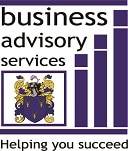In the current economic climate, you may be tempted to take in some private boarders or student homestays to top up your income.
This article aims to give you an overview of the tax implications if you do so.
If you receive income from private boarders, including student homestays you can choose one of 2 methods to work out whether you have to pay tax on the income:
1. The standard-cost method
The standard-cost method uses an average price for basics such as the cost of food, heating, power and transport. The amount is an average across the country and is inflation -adjusted annually.
If your income from boarders is less than the standard cost allowed, you will not have to file a tax return, keep records of related expenditure, or pay tax.
For the year ended 31 March 2009, if you have 1 or 2 borders, then the standard cost is $227 a week for each boarder. For 3 or 4 boarders, the standard cost is $227 each for the first two boarders, and then $185 for each subsequent boarder.
Let me provide a couple of examples:
Example 1: If you have two boarders and they pay you $215 each a week, you do not need to file a tax return or pay tax.
Example 2: If you have two boarders each paying you $250 a week, you may need to file a return and pay tax, depending on your circumstances.
Note: If you have five or more boarders you cannot use the standard-cost method. You are required to complete a tax return and include all payments received as income. You may claim actual allowable expenditure but you must keep records to support your claim.
2. Actual-cost method
You may choose to keep full records of your actual income and expenses (i.e. food, etc) for the year. If you choose this option you will need to complete a tax return to declare any profit or claim any loss.
